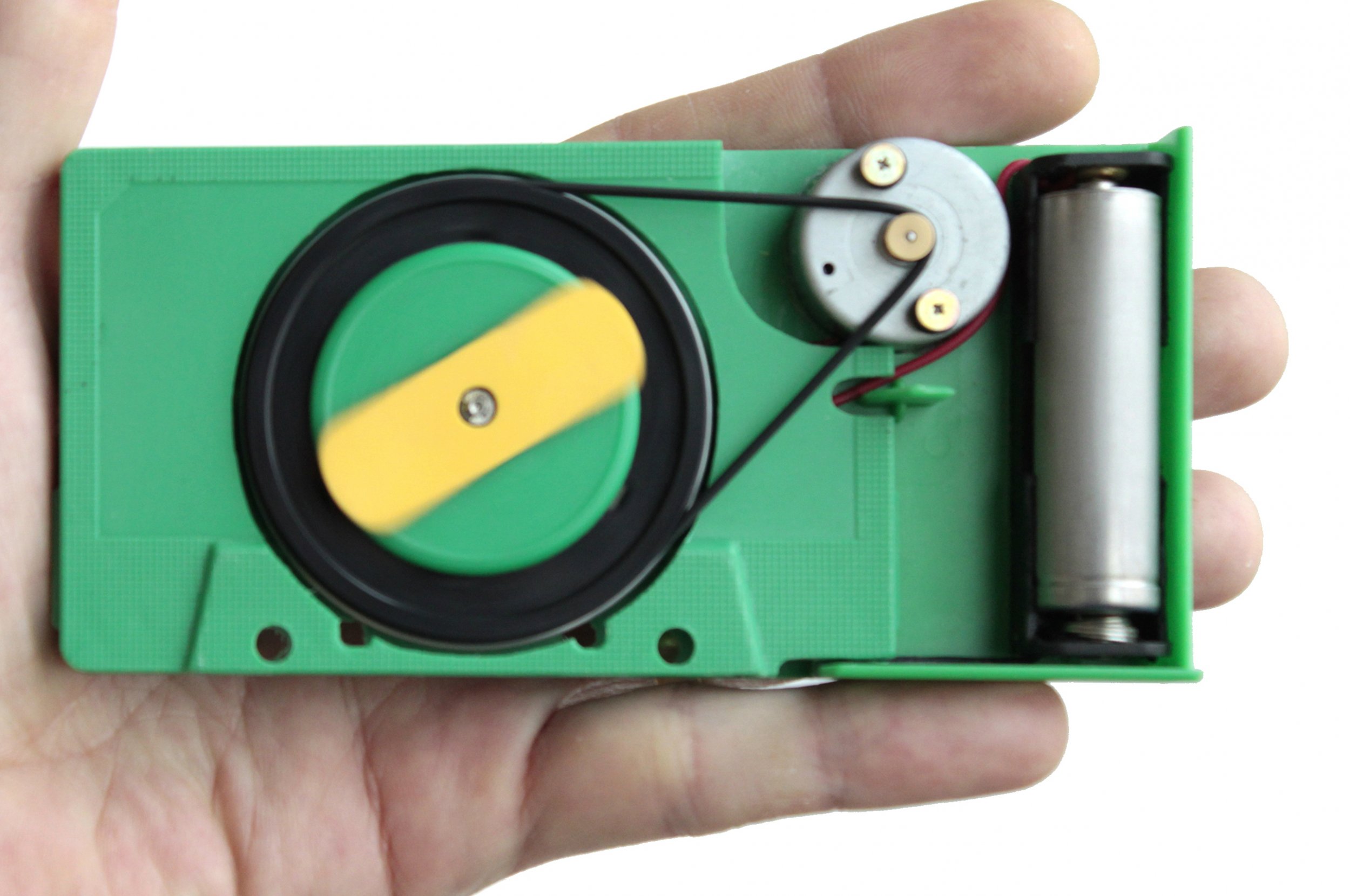
When Alexis Malbert plays a cassette, he doesn't just throw one on and hit play, but actually uses the tape as a musical instrument. The French musician, who performs under the name Tapetronic, has hacked cassettes since the '90s, turning them into specialized, wild-sounding noisemakers. He shows some of them off in the video below.
One surprise the clip reveals is that many of Malbert's noisemakers don't use any actual tape. Instead, they use different tricks to make magnetic fields that the cassette player's tape head picks up and turns into sound. "The tape head is very important," he says.
The simplest example is the tape he calls Jump, half a cassette body holding a spring that points toward the tape head. When Malbert taps it, the spring vibrates and produces a magnetic field, creating an audio signal. "I use a spring with nothing else, and with my hand I can make some sound," Malbert says.
Other creations work the magnetic field in more sensational ways. "One of my best cassettes is the Twist, the last one in the video," he says. "I use a spinning top with a motor from a CD player and when I start the top, it turns the motor and that makes a disco sound that's crazy and funny."
Another device uses the motor of a CD player. "There's a magnetic field from the motor and that makes a bass sound—a big bass sound," Malbert explains. A third tape, called Vibro, repurposes a mobile phone's vibrator to produce something like a heavy metal guitar tone.
The first hack in the video, called Scratchette, actually does use a bit of tape. Malbert opens a cassette and replaces the tape rolls with a fixed strip that has sounds he likes. To play it, he slides it back and forth in a motorless recorder. This way, he says, "I can scratch the tape like a record."
Fittingly, the voice in the video repeats "I change the cassette" in French.
When he plays live as Tapetronic, Malbert uses regular tapes with samples on them to create a musical base and get people dancing. Then he performs over it using four or five players at a time, some of them modified so that he can change the speed—and the pitch—the tapes play at. "Every time I change the cassettes my hands are dancing," he says. "It's gestural like a scratch DJ. I can make scratches but very weird ones."
Malbert says he's happy that cassettes are back in style and that labels are using them for new releases. But he still sees himself as something different. "Today a lot of people love cassettes for the nostalgia. I never stopped making tapes. That's never stopped. For me, it's the idea to make new with the old, to change old things to make the future."
Uncommon Knowledge
Newsweek is committed to challenging conventional wisdom and finding connections in the search for common ground.
Newsweek is committed to challenging conventional wisdom and finding connections in the search for common ground.
About the writer
To read how Newsweek uses AI as a newsroom tool, Click here.








